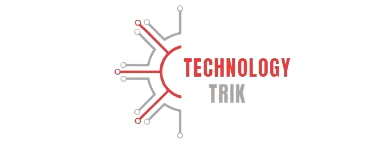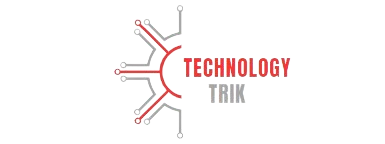In the realm of mathematical examination, estimations, and computations, accuracy and exactness are foremost. The succession “9.02 8.9975 13/5” presents an entrancing case for those inspired by the crossing point of math, material science, and designing. This article digs into every part, investigating their singular importance and how they all in all structure an essential piece of different logical and specialized fields.
Figuring out the Parts: 9.02, 8.9975, and 13/5
9.02: Precision and Context

The number 9.02 might seem straightforward, but in scientific contexts, even a small decimal place can carry significant meaning. It often represents measurements with a high degree of precision, indicating a carefully controlled experimental condition or a specific material property. For example, in science, a worth like 9.02 could signify the pH level of an answer, demonstrating a marginally essential nature. In material science, it could address an estimation like the refractive record of a medium, exhibiting the medium’s impact on the speed of light.
8.9975:The Quest for Exactness
The worth 8.9975 proposes a considerably better degree of detail and exactness. This degree of explicitness is urgent in fields like quantum mechanics, where even the smallest variety can prompt fundamentally various results. For instance, the speed of light in a vacuum is roughly 299,792,458 meters each second, which can likewise be communicated as 299,792.458 km/s or 8.995 x 10^8 m/s in logical documentation. Such accuracy is essential for computations including the hypothesis of relativity, where time enlargement and length withdrawal become observable.
13/5: Simplifying Complex Ratios
The part 13/5 could appear to be less exact from the outset, however it assumes a basic part in improving on complex proportions into additional reasonable numbers. This part rises to 2.6, a worth that can show up in different settings, like the proportion of parts in a synthetic blend or the stuff proportion in mechanical frameworks. Disentangling to a part like 13/5 aides in understanding extents and scaling in designing plans, guaranteeing that frameworks capability effectively without pointless intricacy.
Applications and Implications in Science and Engineering
Chemistry and Material Science
In science, the precision of values like 9.02 and 8.9975 is basic while managing response rates, harmony constants, and other quantitative perspectives. Precise estimations guarantee that compound responses are unsurprising and controllable, which is fundamental for assembling cycles, drugs, from there, the sky is the limit. The accuracy reflected in these numbers is demonstrative of thorough trial strategies and quality control measures.
Physics and Astrophysics
The mathematical qualities being talked about are similarly critical in material science and astronomy. For instance, the worth 8.9975 can connect with estimations of central constants, like the speed of light. These constants are the establishment whereupon speculations like quantum mechanics and general relativity are constructed. Any variety, but slight, could have significant ramifications for how we might interpret the universe, from the way of behaving of subatomic particles to the extension pace of the universe.
Engineering and Technology
In designing, the division 13/5 can be tracked down in plan determinations and framework improvements. Whether it’s in mechanical designing, where gear proportions should be finely tuned, or in electrical designing, where voltage proportions should be accurate, these numbers guarantee that frameworks work inside their planned boundaries. The accuracy inborn in these figures is a demonstration of the careful preparation and execution expected in designing tasks.
The Job of Accuracy and Exactness in Logical Advancement
Accuracy and precision are the foundations of logical advancement. The capacity to quantify, record, and investigate information with exactitude permits researchers and specialists to anticipate results, repeat analyzes, and advance new innovations. The numbers 9.02, 8.9975, and 13/5, while apparently basic, typify the thorough guidelines important for headways across numerous disciplines.
Difficulties and Contemplations
Nonetheless, accomplishing such accuracy isn’t without its difficulties. Factors like hardware alignment, natural circumstances, and human blunder can all effect the precision of estimations. Thus, continuous advancements in technology, such as more sensitive instruments and better data analysis techniques, are crucial in pushing the boundaries of what we can measure and understand.
Conclusion: The Unseen Importance of Exact Numbers

The sequence “9.02 8.9975 13/5” is more than just a series of numbers; it represents the meticulous attention to detail required in scientific inquiry and engineering design. Each number carries weight in its respective context, contributing to a larger understanding of the natural world and the technologies we buildBy valuing the significance of these exact qualities, we can more readily get a handle on the intricacies and excellence of technical studies.
For those keen on diving further into how accuracy and precision shape our reality, further investigation into related subjects like metrology, quantum mechanics, and compound designing is empowered.
FAQs
1. What is the meaning of the number 9.02 in logical estimations? The number 9.02 frequently addresses an estimation with high accuracy in logical settings, for example, pH levels in science or refractive records in physical science.
2. For what reason is the worth 8.9975 significant in material science? The worth 8.995 can connect with exact estimations of central constants, similar to the speed of light, which are urgent for speculations like quantum mechanics and general relativity.
3. What does the part 13/5 address in designing? The part 13/5 improves to 2.6 and can address proportions in different designing applications, for example, gear proportions in mechanical frameworks or part extents in synthetic combinations.
4. How does precision impact scientific research? Precision allows for accurate measurements and predictions in scientific research, enabling replication of experiments and innovation in technology.
5. What challenges are associated with achieving precise measurements? Challenges incorporate gear adjustment, natural circumstances, and human blunder, all of which can influence the precision and unwavering quality of estimations.


